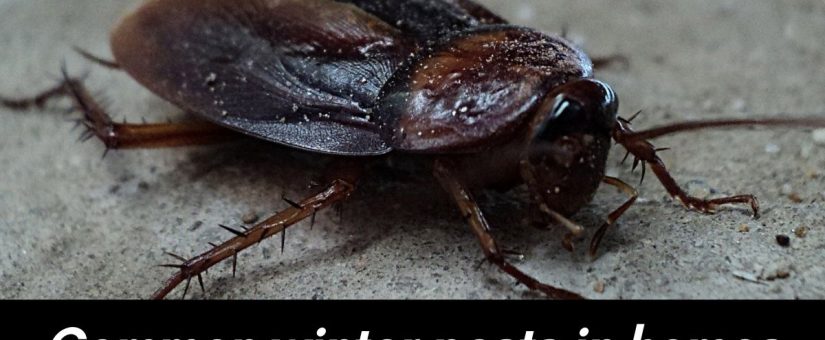
Common Winter Pests in the Triad
- Posted by gordonb
- On November 15, 2021
- 0 Comments
Summer in Greensboro, Winston-Salem, High Point and the greater Triad area is a paradise for pests. They have abundant sources of water, food, warmth and shelter to pick from. But in the winter, your home stands out as an ideal spot. This is especially true if you have sitting water and don’t clean up debris or food waste often.
There are many varieties of pest that may see your house as the perfect retreat from the cold. Here are some broad categories, though, to give you an idea of what to look out for.
- “Overwintering” insects: It’s not just mammals that hibernate. Many insects also scale back their activity in the colder months. Unfortunately, it’s common for them to do so in between the walls of your house. Boxelder bugs, stink bugs and ladybugs are three of the most common, but you may see others. Or, more likely, you won’t see them, since they will be hiding most of the winter, but on a warm day in the winter, a few slow-moving ladybugs or stink bugs emerge, confused by if they should be waking up for spring.
- Active bugs: Not all bugs sleep through the winter though. Many stay active, and these will see your house as an ideal place to live in the winter. You aren’t likely to see ants, bees or mosquitoes, but termites, some flies, cockroaches, bed bugs and many other insects are common. A variety of spiders, including the venomous brown recluse, may also prefer your home to the outdoors during the winter.
- Crawl space critters: The crawl space has it all for a pest looking to thrive in the colder months, and the fact that they are far less likely to encounter the human inhabitants of the home makes it all the more attractive. Everything from termites to foxes can be found in a crawl space. Rodents make nests there, termites chew the floor joists and even raccoons and opossums frequently move in.
- Rodents: Maybe the most elusive and least desired pest roommates are rodents. In the Triad, the most likely to invade a home are house mice, roof rats (also known as black rats), Norway rats and gray squirrels. Roof rats and gray squirrels make nests in gutters and in the attic, if they can gain access. Norway rats and house mice are more likely to live in garages and sometimes in the home itself. Rodents carry diseases, especially in their waste, and they damage insulation and wiring.
But you don’t have to live with these pests. There are simple steps you can take to make them less likely to appear and more likely to move out.
- First, if there’s no easy way in, they are far less likely to enter. Look around your house, especially in garages, attics and where your foundation meets the house’s framing, to see if there are even small gaps or holes. Fill any you find thoroughly.
- Second, consider what food you may be providing. Your kitchen should be kept free from open food on the counters or crumbs on the floor. These are an invitation to insects and other pests to move in.
- Third, eliminate any standing water. Pet dishes, puddles from dripping pipes, soaking dishes and especially moisture in the crawl space need to be identified and prevented. For the crawl space, grading issues are a common cause of moisture and will cause major problems with mold and mildew, not just pests.
- Lastly, be careful about everyday clutter. If your basement or attic has years of debris in piles, it is very attractive for pests to use. You may not even realize there are pests living in these piles for years. It’s common for boxes of family photos to be found later chewed up and ruined by rodent urine.
If you have difficulty managing pests through these prevention methods, call Critter Control of the Triad. We are trained, experienced professionals with the tools and know-how to eliminate all manner of pests you may have in your home. Call (336) 370-0445 today.







